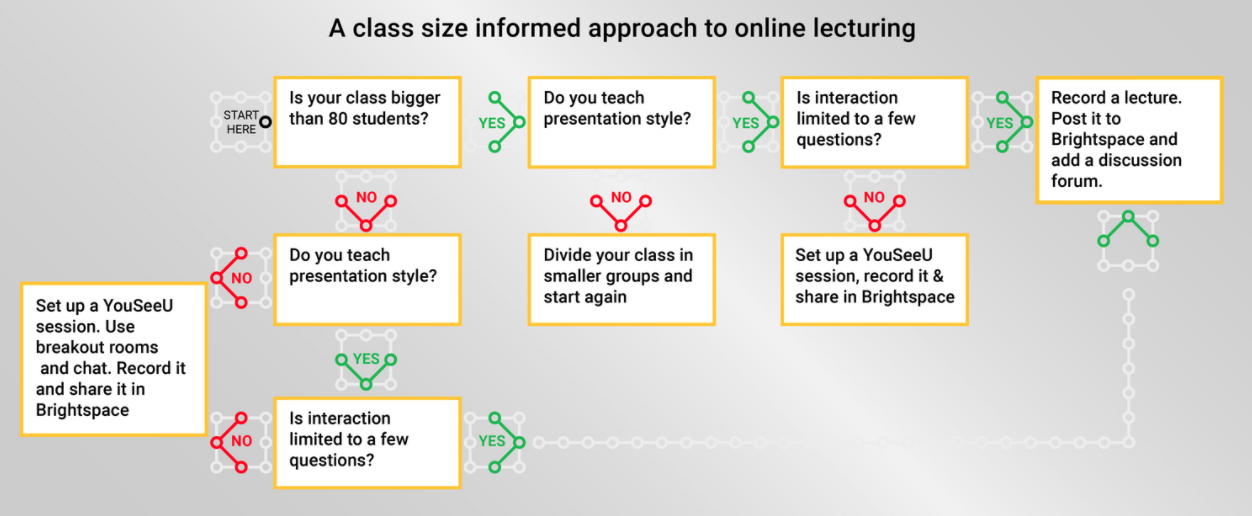2.2.2 Balancing between Asynchronous or synchronous sessions
Course subject(s)
2. Is your course ready to be blended?

Marvin Meyer on Unsplash
When you start working on moving an on-campus course online, often the first thing to come to mind is synchronous sessions. These, however, may not always be needed. See the resources below to better understand the value of synchronous versus asynchronous learning and the beauty of the two blended together.
For classes larger than 80 people, review this advice. For smaller classes, click here.
Your Learning Management System (LMS) likely has a tool for webinars or live classooms, such as MS Teams, YouSeeU/Bongo, Big Blue Button, Zoom, etc.
Synchronous versus Asynchronous
Options for sessions
Instructors may choose to engage their students synchronously or asynchronously depending on the course content or material that needs to be taught. There are many advantages and disadvantages to asynchronous and synchronous teaching options.
|
Synchronous Sessions Instructors and students gather at the same time and interact in “real time” with a very short or “near-real time” exchange between instructors and students. |
|
| Advantages | Disadvantages |
| Immediate personal engagement between students and instructors, which may create greater feelings of community and lessen feelings of isolation. More responsive exchanges between students and instructors, which may prevent miscommunication or misunderstanding. | More challenging to schedule shared times for all students and instructors Some students may face technical challenges or difficulties if they do not have fast or powerful Wi-Fi networks accessible.
|
|
Asynchronous Sessions Instructors prepare course materials for students in advance of students’ access. Students may access the course materials at a time of their choosing and will interact with each over a longer period of time. |
|
| Advantages | Disadvantages |
| Higher levels of temporal flexibility, which may simultaneously make the learning experiences more accessible to different students and also make an archive of past materials accessible. Increased cognitive engagement since students will have more time to engage with and explore the course material. | Students may feel less of a connection with the course and content and less satisfied without the social interaction between their peers and instructors. Course material may be misunderstood or have the potential to be misconstrued without the real-time interaction.
|
Synchronous Sessions: Tips and Tricks
This flowchart gives some guidelines for converting your lecture to an online teaching session:
Class size

For classes larger than 80 students, please read this advice Large online classes
If on the other hand, your classes are smaller, you can find advice here If the scenario arises that you don’t have time to prepare anything before your next lecture, then you could replace it with a live video conference.

Blending your Education by TU Delft OpenCourseWare is licensed under a Creative Commons Attribution-ShareAlike 4.0 International License.
Based on a work at https://digitelpro.eadtu.eu/course-programmes/blended-education/




